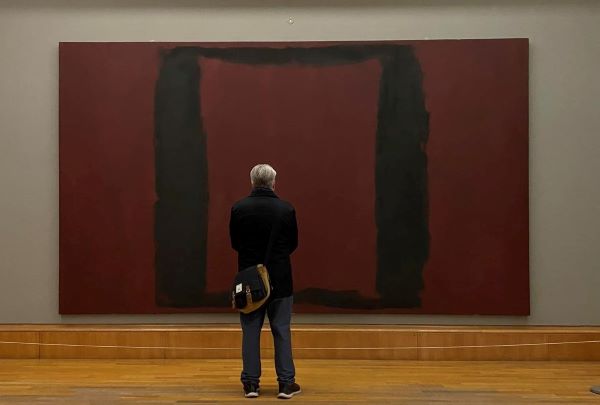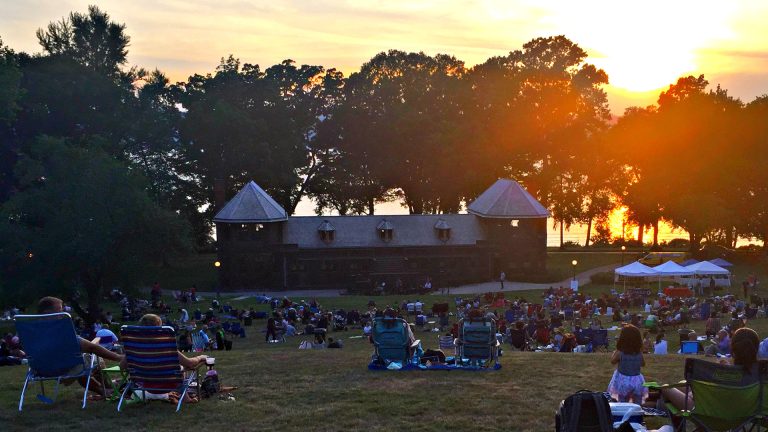Tackling a Tangled Web of Legal Issues for Artists
A professional artist’s work doesn’t just end when their artwork is complete. There’s the business end of things, too. Then there are the many legal issues regarding their artwork. Over the past several years, ArtsWestchester has hosted professional development workshops regarding legal issues for artists, which are voluntarily organized by Wilson Elser partner Jana S. Farmer (JF). Speakers at the most recent workshop in March, in addition to Farmer, included Hopkins IP Principal Julie A. Hopkins (JH), and Wilson Elser Associate Andrea Sobolewski (AS), who all volunteered their time to provide legal recommendations to local artists.
For this issue of ArtsNews, ArtsWestchester’s Executive Assistant, Megan Thomson-Connor, asked all three legal professionals about some art law topics helpful for artists who may not know where to begin.
MTC: What is the most common question you hear from artists and how do you answer?
JF: It’s less about what artists ask and more about what they do not ask. There are a lot of misconceptions among artists with respect to the topics of copyright, attribution and using someone else’s likeness an artwork. For example, many believe that one artist may use the work of another without a license by simply giving a byline credit. Usually, this is not the case. The rule of thumb is that it is always better to receive permission in advance, and preferably in writing.
AS: I frequently receive questions about whether an artist needs permission from a photographer or other artists in various mediums to create or display a work. I state that it is always best to request permission at the outset rather than wait for the other party to raise an issue down the road.
JH: I often get asked “Do I need to register my work with the Copyright Office, since copyright attaches the moment the work is created?” The answer is yes! In order to enforce your rights against an infringer, you need to register the work with the Copyright Office. And, if you register the work prior to an infringement and within three months from first publication, you are eligible for statutory damages, which can be significantly higher than actual damages, and less difficult to prove.
MTC: Where is the best place for artists to get the types of information that you provide at seminars, and what other sources would you suggest they follow?
JF: On behalf of Wilson Elser and in partnership with ArtsWestchester, I am planning to continue organizing educational seminars for artists on the topics relevant to artists’ practice. In addition to universities and pro bono resources recommended by others, the Center for Art Law publishes articles on a wide range of art law-related topics. Wilson Elser’s Art Law Perspectives blog is another free resource for artists and art professionals to help keep them abreast of recent legal developments.
AS: The College Arts Association and Volunteer Lawyers for the Arts.
JH: Also, local law schools often provide free clinical services to individuals, artists and start-up companies.
MTC: Are there any particular pieces of legislation that artists should look out for as they are subject to change?
JF: The art law field is actively developing. In addition to the statutes mentioned by the others, the Copyright Alternative in Small-Claims Enforcement (CASE) Act is one piece of legislation to watch. It is expected to come before the U.S. Congress this year and is intended to benefit artists, for whom copyright enforcement litigation is often cost-prohibitive. This proposed legislation is not without criticism, however.
AS: New York’s Arts and Cultural Affairs Law is constantly changing. For several years, there was proposed legislation that sought to provide heightened protection to art authenticators, but that has struggled to make it past the New York State Assembly.
JH: There is a pending bill introduced in the New York legislature to amend the New York Privacy Law. Amendments include distinguishing between “privacy” and “publicity” and who is eligible under each to make claims. The current law considers celebrities and non-famous people to be the same under the law with the same rights. Right of Publicity (for celebrities) claims would extend to individuals after death, if recorded with the Secretary of State. Further, the rights would be assignable and transferable to third parties. Currently the rights extinguish at death and are not assignable or transferable.
MTC: If you could give one general recommendation to an artist, what would it be?
JF: The legal issues that artists face typically center around copyright, sometimes trademarks, rights of privacy/rights of publicity (related to the use of the name or likeness of a person) in addition to agreements with dealers, publishers, printers, etc. To avoid common misconceptions, it is a good idea to pick up a book on these topics so that the artist would at least be aware of potential issues.
AS: Always be sure to have a written agreement with any party with whom you are working, and if you are ever unsure about what to include in that agreement, it makes sense to speak with a lawyer.
JH: Be proactive in protecting yourself legally. Protect your work – register copyrights, have agreements in place to secure your rights and to ensure that you are not running afoul of the rights of others.
The responses provided here are for informational purposes only and are general in nature; they are not intended to and do not constitute legal advice. Moreover, the responses are not intended to and do not constitute a solicitation for the formation of an attorney-client relationship.
A version of this article first appeared in the June issue of ArtsNews, ArtsWestchester’s monthly publication. ArtsNews is distributed throughout Westchester County. A digital copy is also available at artsw.org/artsnews.
More from As a Matter of Art Blog

About ArtsWestchester
For more than 50 years, ArtsWestchester has been the community’s connection to the arts. Founded in 1965, it is the largest, private, not-for-profit arts council in New York State. Its mission is to provide leadership, vision, and support, to ensure the availability, accessibility, and diversity of the arts. ArtsWestchester provides programs and services that enrich the lives of everyone in Westchester County. ArtsWestchester helps fund concerts, exhibitions and plays through grants; brings artists into schools and community centers; advocates for the arts; and builds audiences through diverse marketing initiatives. In 1998, ArtsWestchester purchased the nine-story neo-classical bank building at 31 Mamaroneck Avenue which has since been transformed into a multi-use resource for artists, cultural organizations, and the community. A two-story gallery is located on the first floor of ArtsWestchester’s historic building on Mamaroneck Avenue.
For more than 50 years, ArtsWestchester has been the community’s connection to the arts. Founded in 1965, it is the largest, private, not-for-profit arts council in New York State. Its mission is to provide leadership, vision, and support, to ensure the availability, accessibility, and diversity of the arts. ArtsWestchester provides programs and services that enrich the lives of everyone in Westchester County. ArtsWestchester helps fund concerts, exhibitions and plays through grants; brings artists into schools and community centers; advocates for the arts; and builds audiences through diverse marketing initiatives. In 1998, ArtsWestchester purchased the nine-story neo-classical bank building at 31 Mamaroneck Avenue which has since been transformed into a multi-use resource for artists, cultural organizations, and the community. A two-story gallery is located on the first floor of ArtsWestchester’s historic building on Mamaroneck Avenue.







